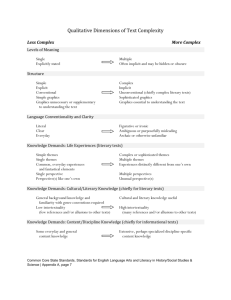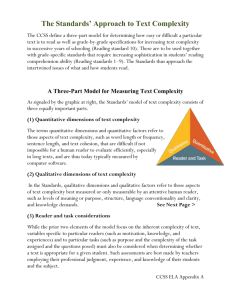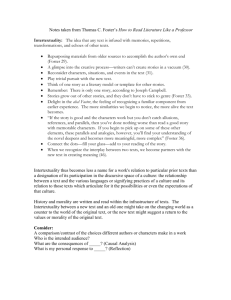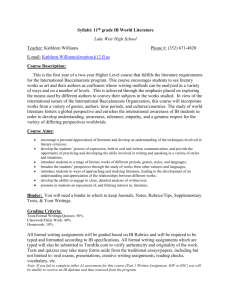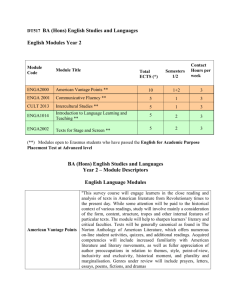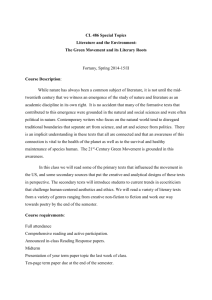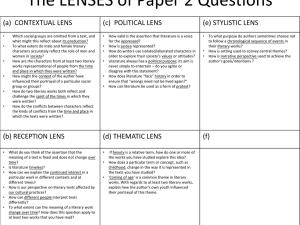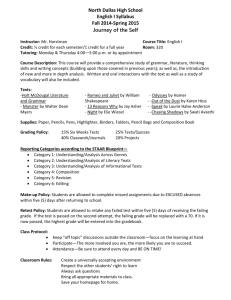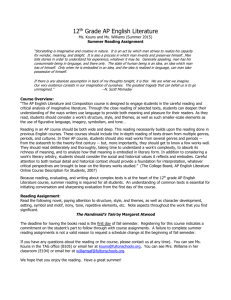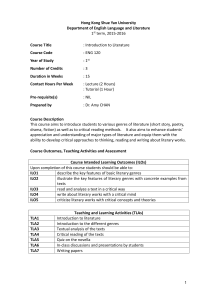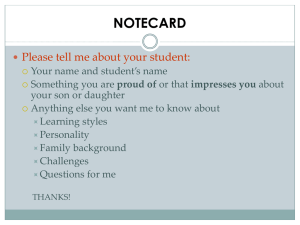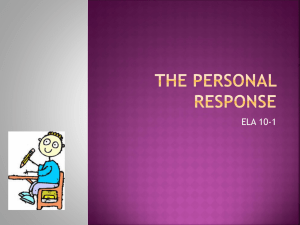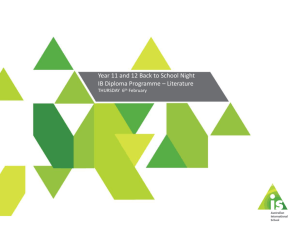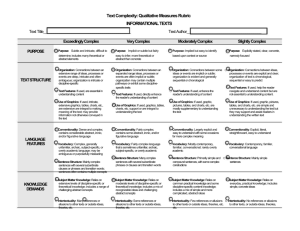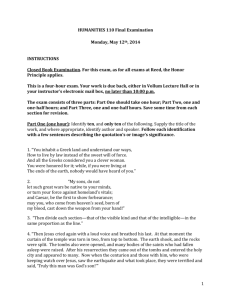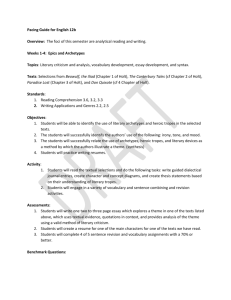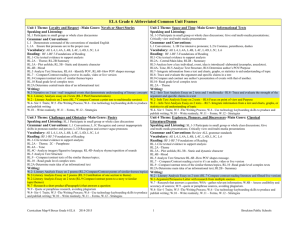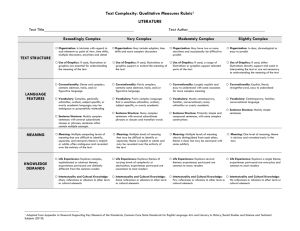Qualitative Dimension of Text Complexity
advertisement
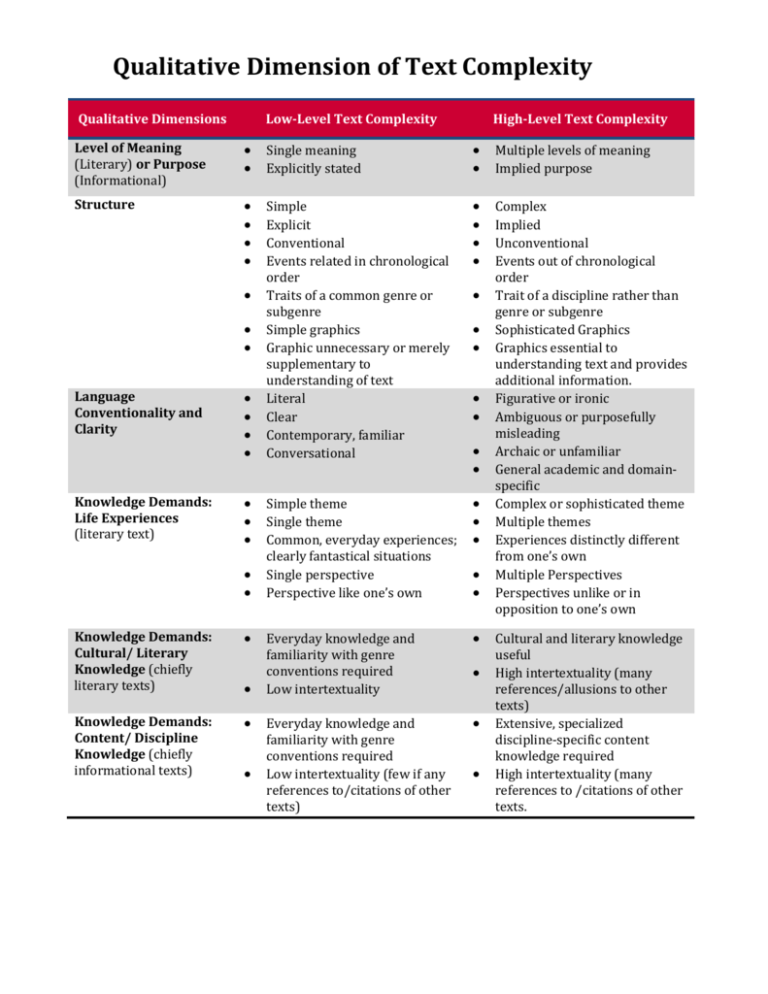
Qualitative Dimension of Text Complexity Qualitative Dimensions Low-Level Text Complexity High-Level Text Complexity Level of Meaning (Literary) or Purpose (Informational) Single meaning Explicitly stated Multiple levels of meaning Implied purpose Structure Simple Explicit Conventional Events related in chronological order Traits of a common genre or subgenre Simple graphics Graphic unnecessary or merely supplementary to understanding of text Literal Clear Contemporary, familiar Conversational Simple theme Single theme Common, everyday experiences; clearly fantastical situations Single perspective Perspective like one’s own Complex Implied Unconventional Events out of chronological order Trait of a discipline rather than genre or subgenre Sophisticated Graphics Graphics essential to understanding text and provides additional information. Figurative or ironic Ambiguous or purposefully misleading Archaic or unfamiliar General academic and domainspecific Complex or sophisticated theme Multiple themes Experiences distinctly different from one’s own Multiple Perspectives Perspectives unlike or in opposition to one’s own Everyday knowledge and familiarity with genre conventions required Low intertextuality Everyday knowledge and familiarity with genre conventions required Low intertextuality (few if any references to/citations of other texts) Language Conventionality and Clarity Knowledge Demands: Life Experiences (literary text) Knowledge Demands: Cultural/ Literary Knowledge (chiefly literary texts) Knowledge Demands: Content/ Discipline Knowledge (chiefly informational texts) Cultural and literary knowledge useful High intertextuality (many references/allusions to other texts) Extensive, specialized discipline-specific content knowledge required High intertextuality (many references to /citations of other texts.
